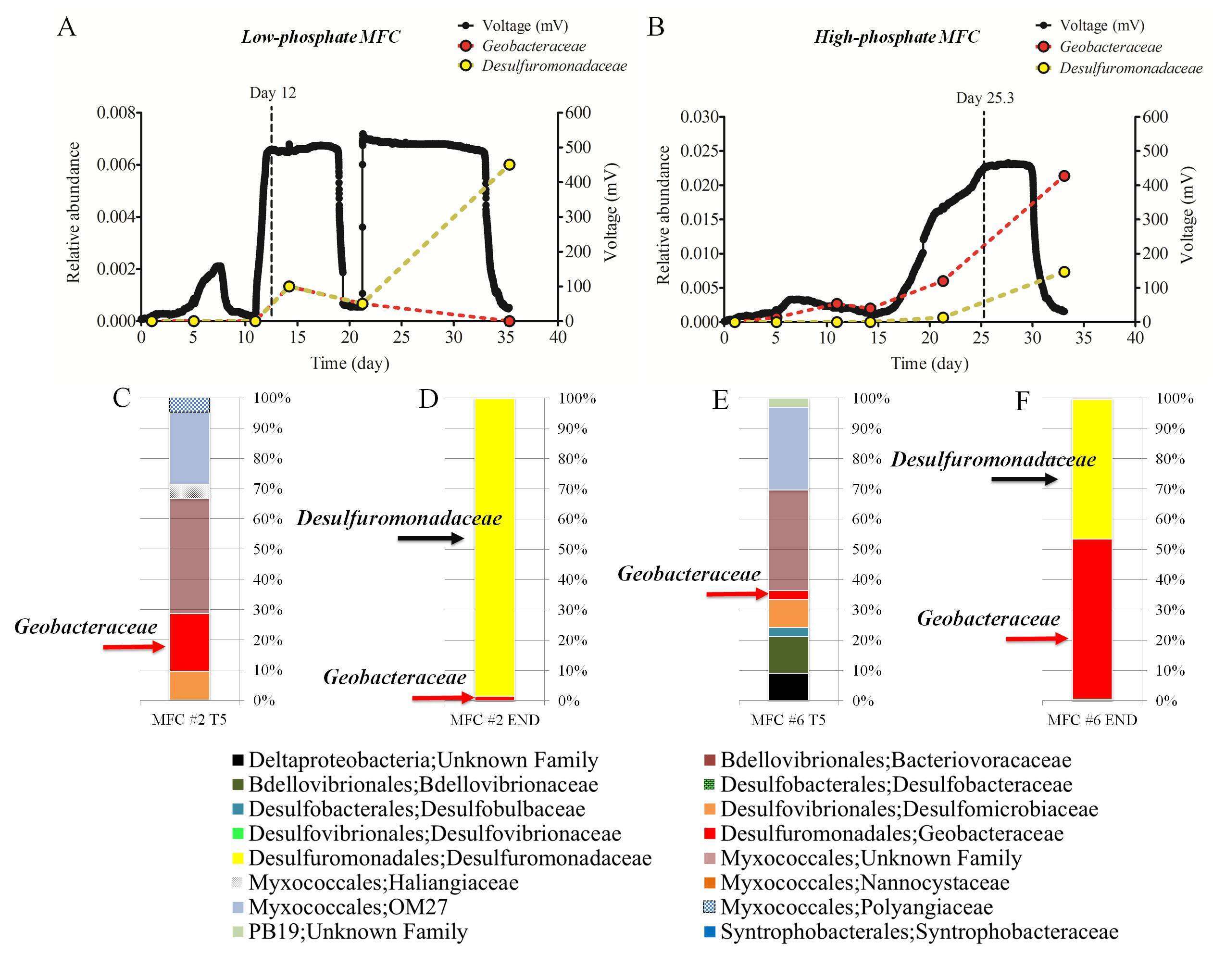
ZOOMING IN: MICROBIAL COMMUNITY STRUCTURE AND DYNAMICS DURING STARTUP TIMES IN MICROBIAL FUEL CELLS – THE EFFECT OF PHOSPHATE CONCENTRATIONS
2Department of Molecular Microbiology and Biotechnology, Tel Aviv University, Tel Aviv
In spite the high potential available energy within wastewater, conventional biological wastewater treatments that require substantial electric energy and produce excess sludge are still being used today. Thus, shifting from disposing waste to using it is essential for sustainability. Microbial fuel cells (MFCs) have received much attention as an alternative technology that generates electricity simultaneously with wastewater treatment. For MFCs to become a cost-effective wastewater treatment technology, they must produce a stable electro-active microbial community relatively quickly, and operate under fluctuations in nutrient levels. One of the major problems in up-scaling MFCs is the ability to monitor the microbial community on-line without interfering with the systems stability that may be caused from frequent sampling of the anodic biofilm. We followed the composition dynamics of the anode-respiring-bacteria (ARB) and suspended-cells of the bulk liquid from which the anodic biofilm originates in eight single-chamber air-cathode MFC reactors that operated under low and high phosphate concentrations (16 ppm and 134 ppm, respectively). A stable voltage was reproducibly obtained in all cells, however it was attained two-fold faster in cells inoculated with lower phosphate concentrations relative to high-phosphate concentrations. Examining temporal changes of community structures of the suspended-cells and ARB, indicated that a faster inoculation could be attributed to a Desulfuromonadaceae-dominated-biofilm, while slower inoculation MFCs had a co-dominated community composed of Desulfuromonadaceae and Geobacteraceae. Interestingly, these differences were reflected in the dynamics of those taxa in the suspended-cells, as well. These results point at a possible linkage between system stability, planktonic dynamics and the final established anodic community structure and enhance our understanding of the anodic biofilm inoculation process.

Figure 1: Voltage generation of A) low phosphate conditions MFC and B) high phosphate conditions MFC, plotted with the relative abundance of Desulfuromonadaceae and Geobacteraceae sampled from the planktonic phase at the different time points. Bar graphs are to show the OTU relative abundance distribution of the anodic biofilm (only δ-proteobacteria OTUs) for low phosphate conditions : C) day 5; D) at the end of the inoculation period, day 39 and for high phosphate conditions: E) day 5; F) at the end of the inoculation period, day 33. Day 12 and 25.3 indicate the start-up time it took to achieve a stable voltage.
Powered by Eventact EMS